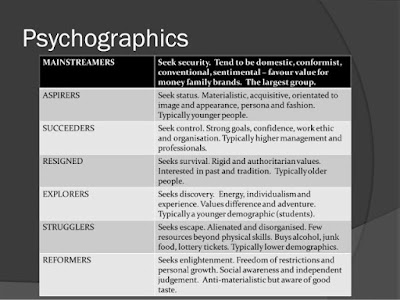In the U.S. Political Campaign 2016 Hillary Clinton's main target audience was defined as democrats, women, mothers and the working people. Through holding surveys and focus groups before the election she was able to work out what people wanted from her. She then catered to them and what they want from a leader throughout her campaign. She was standing to be the first woman president and was a huge supporter for panned parenthood (which republicans are completely against). She proved successful as the most popular of the two candidates, winning the popular vote - but unsuccessful as President-Elect.
Audience classifications are used to categorise people of different social grade and income, for market research, targeting, lifestyle statistics, and statistical research.
One way this can be conducted is through Socio-economics'. This takes into account income, education, occupation and neighbourhood.
Psychographics is based on a person's personality, values, attitudes, interests and lifestyle. This strategy is proven most successful as people care more for what they want and aim to have in life. People are categorised into the following:
Geodemographic segmentation refers to a range of methods used for classifying and characterising neighbourhoods based on the principal that residents living near each other are likely to have a similar demographic. Geodemographics is great if another place wants to see how a programme/genre fares before you air something alike, somewhere similar.

